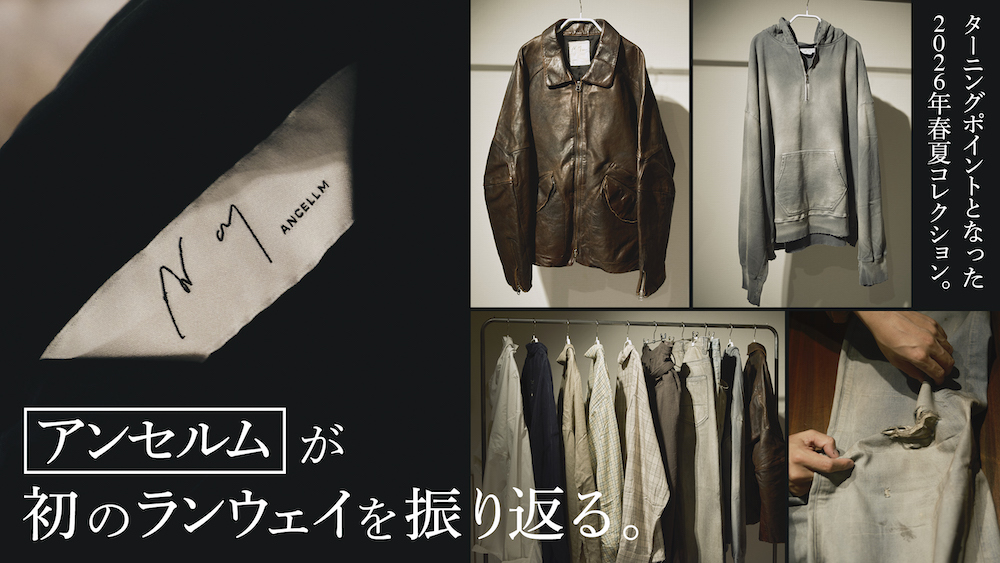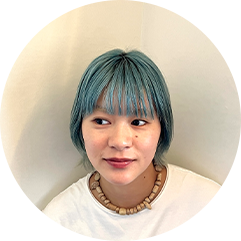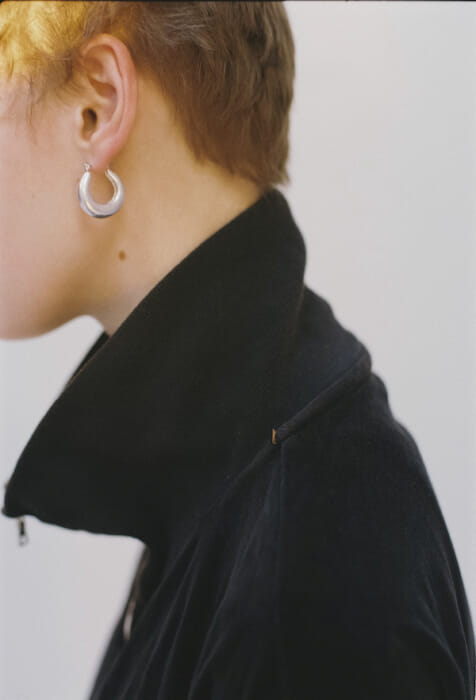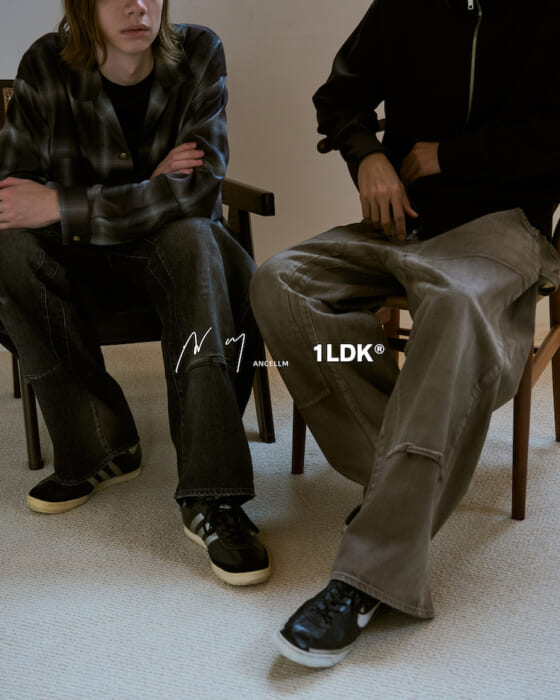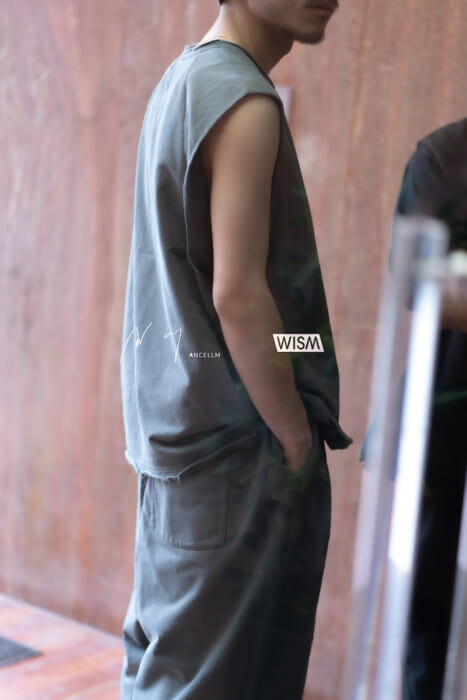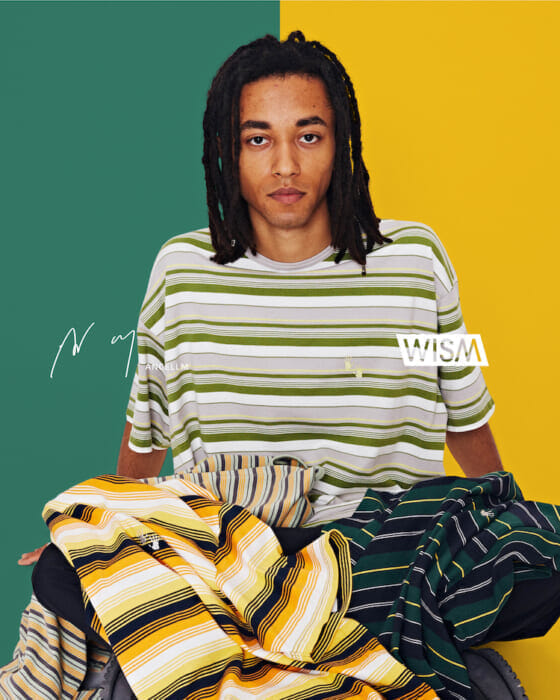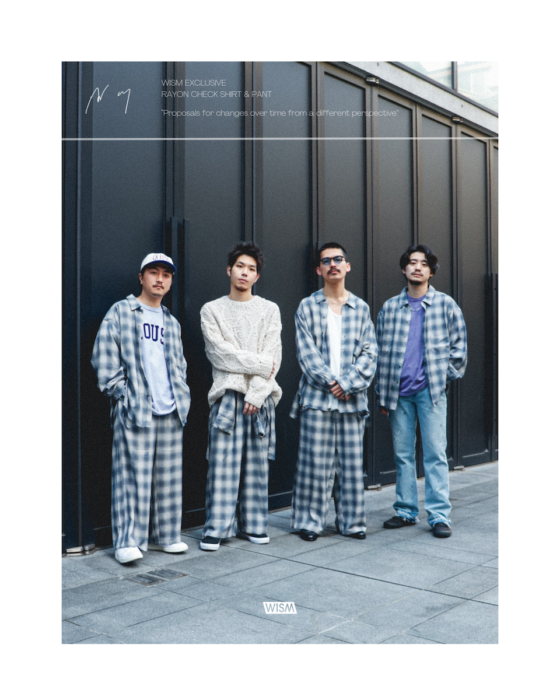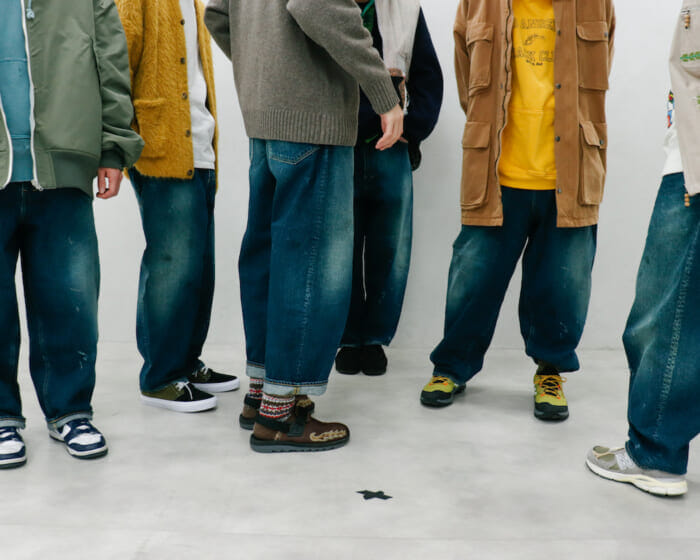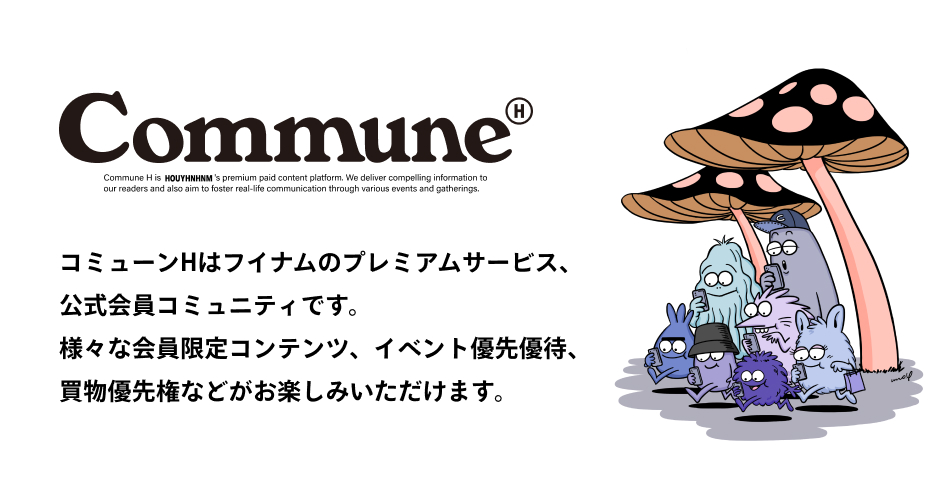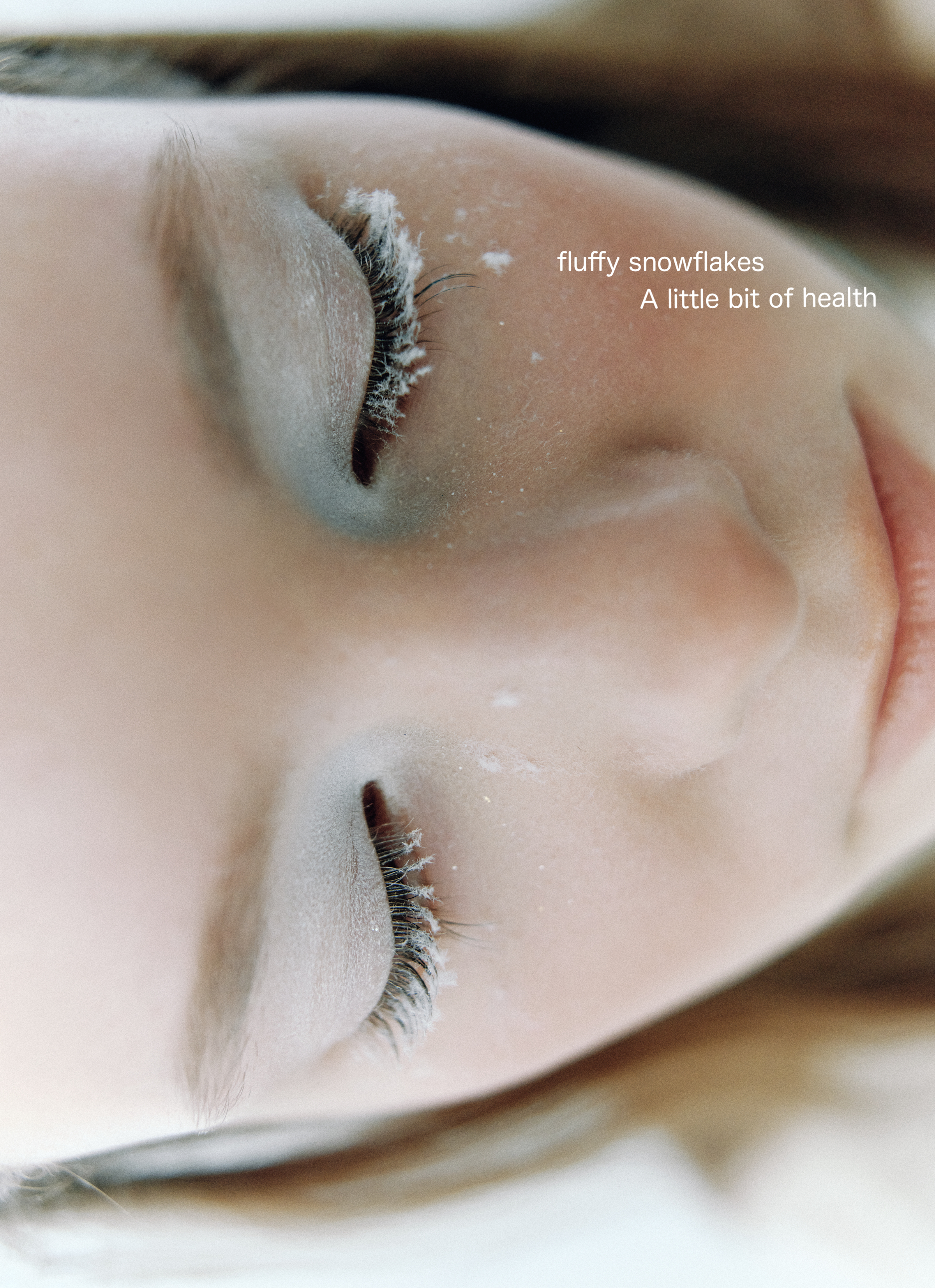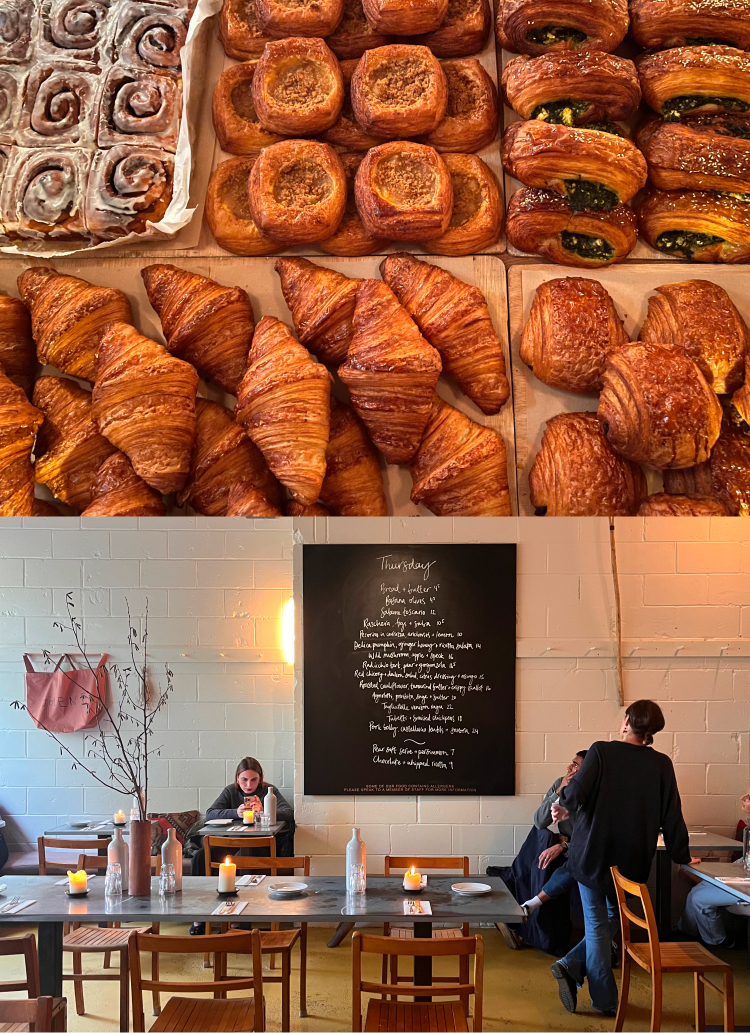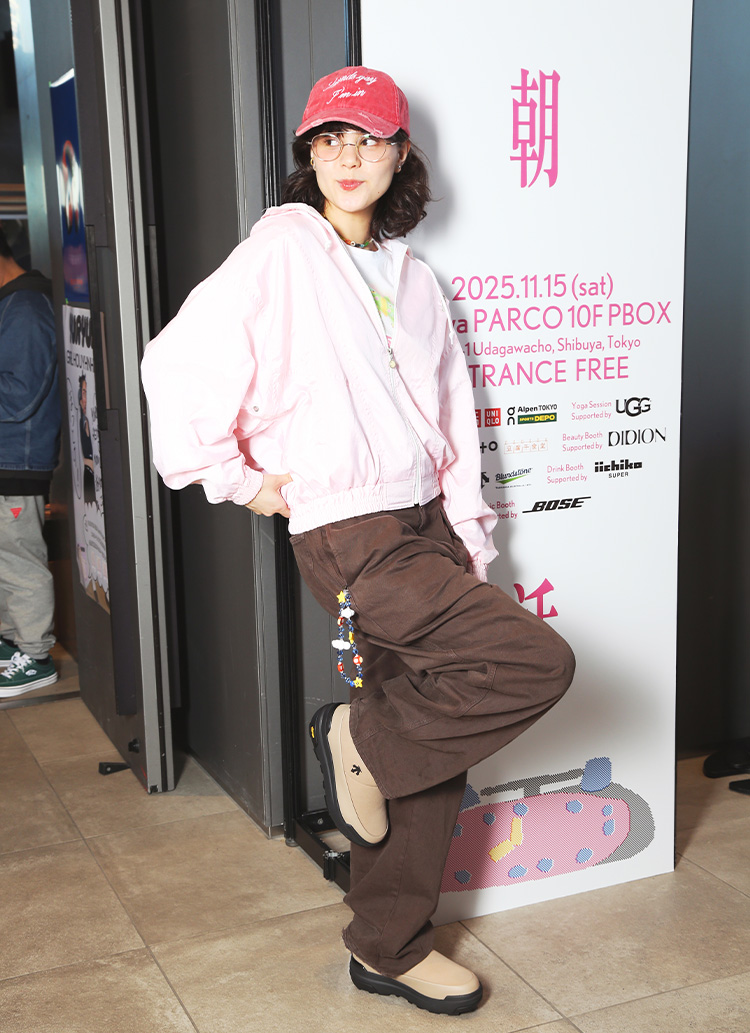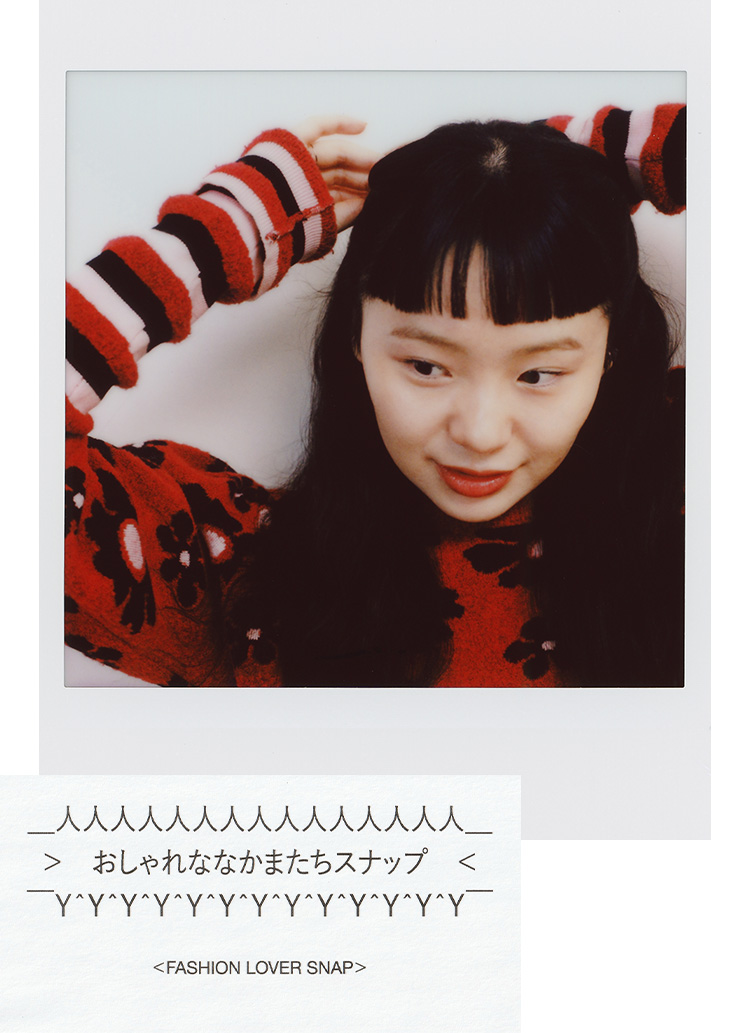ANCELLM, based in Kojima, Okayama Prefecture, held its first runway show at this year's "Rakuten Fashion Week TOKYO. Clothes are only complete when they change over time. We ask designer Kazuya Yamachika about the trajectory of how the brand has achieved this stage in just five years since its debut in the spring/summer of 2021, and his thoughts on the show, while keeping this belief in mind.
Photo_Mikito Hyakuno
Edit_Amame Yasuda
PROFILE
After gaining experience with various brands, he launched Anselm in his hometown of Kojima, Okayama Prefecture, for the 2021 SS season, and will hold the brand's first runway show at the Rakuten Fashion Week TOKYO in 2025.
Instagram: @ancellm_official
It was a turning point for Anselm, his first runway show.
Have you been thinking about participating in this year's "Rakuten Fashion Week TOKYO" for some time?
Yamachika:At first, I had no idea. I started Anselm five years ago during the Corona period, so I had no idea what the show would be like or even what it would be like in the future.
What made you decide to participate in this project?
Yamachika:The main reason was that I was encouraged by the people around me, but I also wanted the people who usually work with me in Kojima making Anselm's clothes to see the show. While the number of factory workers is aging, many of the people who work on my brand are of a relatively younger generation. That is why I hope to boost their morale by taking the initiative in this kind of thing. I also decided to participate in this show because I wanted our customers, who usually wear our clothes, to enjoy the show as well.
I see. I am sure it is an honor for you to be able to showcase the clothes you have always made in this way. It is also a valuable opportunity not only for the people involved, but also for the fans of the brand.
Yamachika:Before the show, we had a pop-up at "The Stage" on the first floor of the Isetan Shinjuku main building. We invited 100 people who had made purchases there to the show. It was a great feeling to see the clothes you bought in a runway show.
The show had a stage in a fairly spacious area, and it seemed as if people were gathered there. Were you particular about that kind of staging?
Yamachika:We dared to create a stage in a part of the open space, and took a format where people are crowded together to watch the runway. Anyway, we wanted people to see the clothes as close as possible.
The show was indeed very easy to watch because of the close proximity to the models. What was the concept of the runway?
Yamachika:Actually, I didn't have a clear concept. I was conscious of color gradation in order to convey the mood of "Nice to meet you, I'm Anselm" in a runway format. We started with yellow and beige, followed by red, brown, navy, and finally black. Also, many of Anselm's clothes are rugged items, but this time, for the first time, I asked a female stylist to create a different atmosphere to express the brand's character.
Talking about gradation, the music on the runway also seemed to change gradually from the beginning to the end of the runway.
Yamachika:That's right. The music is also very gradient-oriented. The runway is more than 100 meters long, so I was conscious of intonation so that it would not be boring. I asked a professional to compose the music in five or six parts, from fresh to heavy.
I see. I could feel the mood of the Anselm brand throughout the show. I also felt a sense of reality in the trendy styling that could be imitated by both men and women.
Yamachika:Perhaps my storytelling is too rugged and maniacal, but it is actually a more pop-like brand (laughs). I hope you can understand that.
We make clothes that respect the freedom of the wearer.
We've mentioned Anselm many times in our articles on Huynem, but could you tell us again about the brand Anselm?
Yamachika:We make clothes with an awareness of "aging" in mind. However, we do not mainly focus on vintage processing, but rather design our clothes with an eye to how they change beautifully as they are worn by people. Therefore, we apply processing to give the clothes a slightly different feel while maintaining a beautiful, high-quality mood as a base.
Elegant mood and damaged work. What exactly do you do to combine these seemingly opposites into one piece?
Yamachika:We use fabrics of such high quality that no one would want to process them. We make our fabrics while thinking about what kind of treatment to apply to them. We go to the woolen textile production area for meetings, and finally produce beautiful fabrics that express damage and color fading.
I see. The reason for the sophisticated mood was the choice of fabrics, wasn't it?
Yamachika:We are as particular about fabric selection as we are about processing. There is a reason why good fabrics are good, and how to approach them. Our clothes-making process starts with thinking about this.
Do you incorporate the brand's own particular style into the silhouette as well?
Yamachika:As for the silhouette, I try not to make it too clean. I value a sense of discretion. Many of our pieces have an oversized silhouette to create a rough mood. At the same time, I try to create patterns that look beautiful when worn.
The fabrics, processing, and silhouettes are all used to create Anselm's unique mood, aren't they?
Yamachika:That's right. We try to find the right balance between these two elements and find the right balance that is unique to "Anselm". Kojima is famous for denim, so we are able to take on a variety of challenges in processing, which is our specialty. We make our products through trial and error at the factory, so the amount of samples we have to create just for one model is not half the amount of work we have to do.
What is the reason why you started making this kind of clothes at Anselm?
Yamachika:I didn't want to focus exclusively on vintage processing. This may be because I myself liked various kinds of fashion. First, I was interested in street fashion, and then I became interested in vintage clothing. I also went through the heyday of fashion. So instead of focusing on a single genre, I hope to incorporate all elements to create clothes that fit any style.
While there are many brands that target a narrow demographic, I feel that the range of people who wear Anselm's clothes is truly broad.
Yamachika:That may be so. I want as many people as possible to wear my clothes, and since fashion is free, I think it's fine if they wear them as they like. Even in terms of how to treat the clothes, people will iron them, but I think there are times when they become crumpled up. I want to make clothes that look cool even when worn in such a state.
Clothes that can be worn in any way by the wearer. It seems to trust the sense of the person who picks it up.
Yamachika:Even secondhand clothes are bought from a huge selection, and you choose what you like. I hope that people will choose Anselm's clothes in the same way. Besides, trends are diversifying nowadays.
Especially since the development of social networking services.
Yamachika:In the past, people would imitate the styles in magazines and dress the same way, but I don't think there are many trends that are taking fashion by storm nowadays. That is why I think that clothes that can be worn freely by each individual fit the times better. I think it is very important to have a brand's own style.
Anselm's Spring/Summer 2026, which concerns Huynem.
I would like to introduce some of the items in this collection that caught my attention to the readers of Finamu. Please tell us about the key points of the items along with the styling of the show. First, let's start with this parka.
LIGHT ROOP ZIP HOODIE
Yamachika:This may contradict what I said earlier, but I dared to make this parka from a material that is not good. I thought that the crumpled sweatshirt parkas at thrift stores were very comfortable to wear. I came up with the idea of wearing a silhouette like that. Since it's spring and summer, I skipped the inner lining in order to make it as thin as a cut-and-sew. I don't think there are many people who would process the back side of a garment.
I have touched it, and it is true that the ones in the thrift stores are as thin as this.
Yamachika:Yes, the terror terror one. That's exactly what we're aiming for.
This parka is an item that can be styled in a wide range of ways. You can play with the innerwear you wear inside.
Yamachika:In this case, the innerwear and pants are both in the same color with a processed effect, but you can also use colored items or dare to match them with beautiful items.
LETHER JACKET
Leather items from "Anselm" are fresh.
Yamachika:We had never made leather items before because we did not have a convincing production background, and in fact, we did not have the resources to do so. Originally, the leather had a strong sheen, as if worn by a fashionable Italian man, but the processing has reduced the shine to this level. This type of leather becomes darker when super-pressed, so we pressed it to bring out this color. I wanted something with a retro mood, but with a well-defined shape.
The items themselves are rugged, but they don't look out of place when worn by women, as in the runway looks.
Yamachika:That's right. Because it is a masculine item, we decided early on to have a female model wear it in this collection. The color of the inner shirt and the way the collar is open give it a loose feel. It looks cool and foreign.
10oz AGING TYPE-A
This denim is synonymous with the brand, isn't it?
Yamachika:That's right. We make denim every season. One of the characteristics of Anselm's denim is that we do not process the marks that appear on the denim as it is worn through, called whiskers or patches. There are also frayed patches on the backs of the knees, which are called "hachinos. This is because I don't want to make vintage denim. And I only wear thick pants, so they don't fade much.
Do you do any damage?
Yamachika:We have made two types of products, one with and one without. The worn look is expressed by the color. Originally, the denim was all indigo blue, but we remove the color in about three separate steps. The gradation is created by changing the color in these three stages.
I see. How did you style such classic denim this time?
Yamachika:This is a top and bottom set of items with processing all over them. As you can see, the inner lining and the lining of the shirt, which you can see when the sleeves are rolled up, are all blue.
The more we hear about your passion for items and styling, the more we realize that the runway show was filled with the essence of "Anselm". You just finished your first show. What are Anselm's goals for the future?
Yamachika:First of all, I want to make clothes in time for the Paris exhibition (laughs). (Laughs) It takes a long time to complete all the items in the collection when I am going through this process. But I hope to do as much as I can without getting too carried away. Of course, we are aiming to go global, but it would be a pleasure if the people at the factories who have always taken care of us and the customers who have always loved our brand could see our work.


